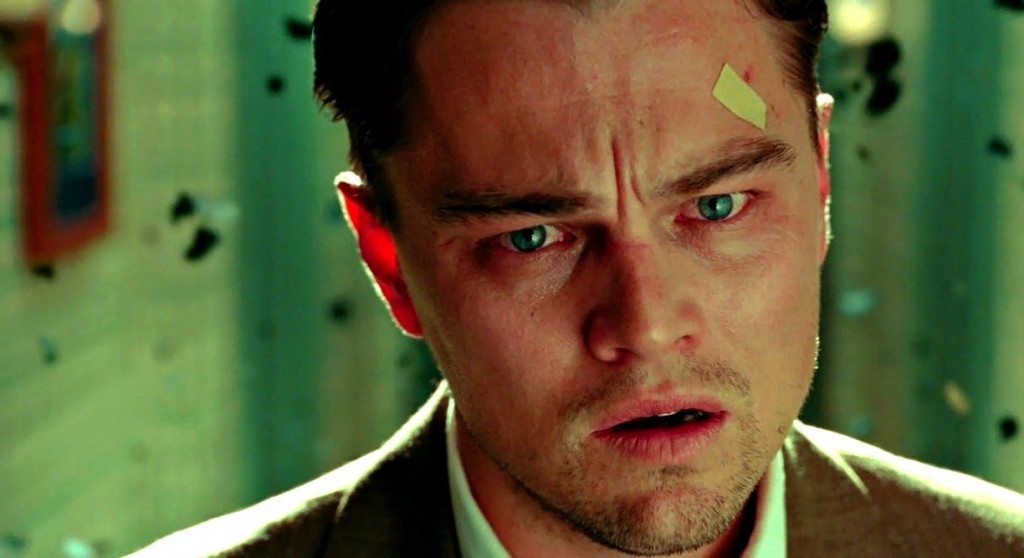Film mental health has become a significant force in raising awareness and understanding of mental health issues. By portraying diverse characters and narratives, films have the power to destigmatize mental illness and spark conversations about mental well-being.
This exploration delves into the multifaceted relationship between film and mental health, examining how movies have shaped public perception, served as a therapeutic tool, and become a platform for advocacy. We will explore the impact of films on mental health awareness, the representation of mental health conditions in different genres, and the potential of film to be used as a therapeutic resource.
The Impact of Film on Mental Health Awareness

Film has emerged as a powerful medium for raising awareness about mental health issues and challenging stigma surrounding them. Through compelling narratives, relatable characters, and authentic portrayals, films have opened dialogues, fostered empathy, and provided valuable insights into the lived experiences of individuals facing mental health challenges.
Films as a Catalyst for Dialogue
Films have the ability to spark conversations about mental health in a way that other mediums often cannot. By showcasing the realities of mental illness through the lens of fictional characters, films can help viewers to understand and empathize with individuals who may be struggling.
For example, the film “Silver Linings Playbook” (2012) follows the story of Pat, a man struggling with bipolar disorder, as he navigates the challenges of re-integrating into society after a period of hospitalization. The film’s portrayal of Pat’s journey, including his highs and lows, his struggles with medication, and his relationships with family and friends, helped to humanize the experience of bipolar disorder and challenge stereotypes.
Another example is the film “A Beautiful Mind” (2001), which tells the story of John Nash, a brilliant mathematician who suffers from schizophrenia. The film’s depiction of Nash’s hallucinations, delusions, and struggles with his illness, while fictionalized, helped to raise awareness about schizophrenia and its impact on individuals.
Films as a Tool for Reducing Stigma
Films have also played a significant role in reducing stigma surrounding mental health. By portraying individuals with mental illness in a positive light, films can help to challenge negative stereotypes and promote understanding and acceptance. For example, the film “Inside Out” (2015) uses animation to explore the inner workings of a young girl’s mind, personifying her emotions as characters.
The film’s portrayal of sadness, anger, fear, joy, and disgust as essential parts of a healthy emotional landscape helped to normalize the experience of emotions and challenge the stigma associated with mental health. The film “The Perks of Being a Wallflower” (2012), based on the novel by Stephen Chbosky, explores the challenges of adolescence, including mental health issues like depression and anxiety.
The film’s portrayal of the protagonist’s struggles and his journey toward self-acceptance helped to destigmatize mental health and encourage young people to seek help.
Mental Health Representations in Film: Film Mental Health

Film has become a powerful medium for exploring a wide range of human experiences, including mental health. The way mental health is portrayed in film can have a significant impact on public perception and understanding. This section delves into how mental health is depicted across different film genres, identifies common tropes and stereotypes, and examines the potential consequences of inaccurate or insensitive representations.
Mental Health Portrayals in Different Film Genres
The portrayal of mental health varies significantly across different film genres. For example, in horror films, mental illness is often depicted as a source of fear and danger, with characters experiencing hallucinations, paranoia, or violent outbursts. This can reinforce negative stereotypes and contribute to the stigma surrounding mental health.
In contrast, romantic comedies often portray mental illness as a source of humor or a character flaw that can be easily overcome with love and support. While this may seem harmless, it can trivialize mental health issues and create unrealistic expectations about recovery.
- Horror Films:In horror films, mental illness is often used as a plot device to create suspense and fear. Characters with mental health conditions are frequently portrayed as unpredictable, dangerous, or even monstrous. This can reinforce the misconception that people with mental illness are inherently violent or a threat to society.
- Romantic Comedies:Romantic comedies often use mental illness as a source of humor or a character flaw that can be easily resolved through love and support. While this may seem lighthearted, it can trivialize mental health issues and create unrealistic expectations about recovery.
- Dramas:Dramas often provide more nuanced and realistic portrayals of mental health. These films can explore the complexities of mental illness, the challenges of treatment, and the impact on individuals and their families.
- Documentaries:Documentaries can offer valuable insights into the lived experiences of people with mental illness. They can provide a platform for individuals to share their stories, challenge stereotypes, and raise awareness about mental health issues.
Common Tropes and Stereotypes
Despite the increasing awareness of mental health, films often perpetuate harmful tropes and stereotypes. These can include:
- The “Crazy” Character:This trope portrays individuals with mental illness as unpredictable, irrational, and dangerous. This stereotype can lead to discrimination and fear of people with mental illness.
- The “Tragic Victim:This trope depicts individuals with mental illness as helpless victims who are unable to cope with their condition. This can reinforce the idea that mental illness is a personal weakness or a sign of failure.
- The “Superheroic Recovery:This trope portrays individuals with mental illness as overcoming their condition with ease through willpower or love. This can create unrealistic expectations about recovery and discourage people from seeking professional help.
Consequences of Inaccurate Portrayals
Inaccurate or insensitive portrayals of mental health in film can have serious consequences.
“The way mental illness is portrayed in film can have a significant impact on public perception and understanding.”
- Stigma and Discrimination:Negative portrayals of mental illness can contribute to stigma and discrimination against individuals with mental health conditions. This can lead to social isolation, fear of seeking help, and difficulty accessing services.
- Misunderstanding and Misinformation:Inaccurate portrayals can perpetuate misunderstandings about mental illness and create misinformation about its causes, symptoms, and treatments.
- Barriers to Help-Seeking:Films that portray mental illness as a source of fear or shame can discourage individuals from seeking help. This can lead to delayed treatment and worsen mental health outcomes.
The Therapeutic Value of Film for Mental Health

The power of film extends beyond entertainment; it can serve as a therapeutic tool for individuals grappling with mental health challenges. Films can provide a safe space for emotional exploration, fostering empathy, and promoting self-understanding.
The Potential Benefits of Watching Films Related to Mental Health
Films that depict mental health experiences can offer numerous benefits to viewers, particularly those who identify with the characters’ struggles. One key benefit is catharsis, which involves the release of pent-up emotions through watching characters experience similar challenges. This can be particularly helpful for individuals who find it difficult to express their own emotions.
Furthermore, films can provide a platform for emotional processing. By observing characters navigate their mental health journeys, viewers may gain insights into their own experiences and develop coping mechanisms. This can be especially valuable for individuals who are seeking to understand their own emotions and develop healthy strategies for managing their mental health.
Film can be a powerful tool for exploring mental health, offering viewers a glimpse into the complexities of the human mind. But it’s important to remember that mental health is a real issue, and if you’re struggling, resources like UF Health for Employees can provide support.
By raising awareness through film and offering real-world solutions, we can create a more understanding and supportive environment for those facing mental health challenges.
Examples of Films Used in Therapeutic Settings
Films have been increasingly incorporated into therapeutic settings, offering a unique and engaging approach to mental health treatment.
- “Inside Out”(2015): This animated film, which portrays the inner workings of a young girl’s mind, has been used in therapy sessions to help children understand and express their emotions. The film’s visual representation of emotions, such as sadness, joy, and anger, can be particularly helpful for children who struggle to verbalize their feelings.
- “Silver Linings Playbook”(2012): This film, which depicts a man with bipolar disorder navigating his recovery, has been used in therapy sessions to facilitate discussions about mental illness, stigma, and the importance of seeking support. The film’s realistic portrayal of mental health challenges can help individuals feel less alone and more empowered to seek help.
- “The Perks of Being a Wallflower”(2012): This coming-of-age story, which explores themes of social anxiety, depression, and trauma, has been used in therapy sessions to promote discussions about mental health, self-acceptance, and the importance of finding support systems. The film’s exploration of complex emotional experiences can help individuals feel understood and validated.
Film as a Platform for Mental Health Advocacy

Film has become a powerful tool for promoting mental health awareness and challenging stigma. By showcasing diverse characters struggling with mental health conditions, filmmakers can provide valuable insights and inspire conversations about mental well-being.
Impact of Films Featuring Characters with Mental Health Conditions
Films that feature characters with mental health conditions can have a profound impact on viewers’ understanding and empathy. By portraying these characters realistically and authentically, filmmakers can help to destigmatize mental illness and challenge negative stereotypes. This can lead to greater acceptance and understanding of mental health issues, encouraging individuals to seek help when they need it.
Films often explore the complexities of mental health, showing how it can impact individuals and their relationships. Taking care of your mental well-being is crucial, and a great way to start is by incorporating physical activity into your routine.
If you’re in Cape Coral, Florida, check out fitness center cape coral for a variety of fitness options. Regular exercise can be a powerful tool for managing stress and improving mental health, just like the characters in many films learn to cope with their own challenges.
Examples of Films that Have Sparked Conversations and Raised Awareness About Specific Mental Health Issues, Film mental health
Several films have made significant contributions to mental health awareness by tackling specific issues and sparking conversations.
- “Silver Linings Playbook” (2012): This film explores bipolar disorder and the challenges faced by individuals living with this condition and their families. It portrays the importance of medication, therapy, and support systems in managing mental illness. The film’s realistic portrayal of bipolar disorder sparked discussions about the condition and helped to reduce stigma.
- “A Beautiful Mind” (2001): This film depicts the life of John Nash, a brilliant mathematician who struggles with schizophrenia. It highlights the impact of mental illness on individuals and their relationships, and the importance of seeking treatment. The film’s portrayal of schizophrenia helped to raise awareness about the condition and its complex nature.
- “Inside Out” (2015): This animated film uses a creative and accessible approach to explain emotions and their role in mental health. It portrays the complex interplay of emotions, including sadness, anger, and fear, and how they can impact our thoughts and behaviors.
The film’s engaging and imaginative storytelling helped to demystify mental health for children and adults alike.
The Future of Film and Mental Health

The future of film holds immense potential to continue revolutionizing how we understand and address mental health. As technology advances and our understanding of the human mind deepens, film is poised to play an even more critical role in shaping public perceptions, fostering empathy, and driving innovation in mental health care.
Films can powerfully portray mental health struggles, often using imagery to evoke emotions and connect with viewers. The vastness and tranquility of the ocean, as depicted in ocean beauty photography, can be a powerful symbol of calmness and peace, mirroring the desire for inner peace that many characters in these films seek.
By exploring these themes, films can raise awareness and encourage understanding of mental health challenges.
Film’s Evolving Role in Shaping Public Understanding
The power of film to influence public perception is undeniable. Filmmakers can create narratives that challenge stigma, promote understanding, and humanize the experience of mental illness.
- By showcasing diverse and relatable characters grappling with mental health challenges, films can break down stereotypes and foster empathy among audiences.
- Films can also highlight the importance of seeking help and provide information about available resources, empowering individuals to take proactive steps towards their well-being.
- As virtual reality (VR) and augmented reality (AR) technologies become more sophisticated, filmmakers can create immersive experiences that allow viewers to step into the shoes of individuals with mental health conditions, fostering deeper understanding and compassion.
Film’s Potential in Developing Innovative Mental Health Interventions
Beyond raising awareness, film can be a powerful tool for developing innovative mental health interventions.
- Films can be used in therapeutic settings to help individuals process emotions, explore their experiences, and develop coping mechanisms.
- Film-based interventions can be particularly effective for reaching underserved populations, such as individuals in rural areas or those with limited access to traditional therapy.
- Film can also be used to create interactive experiences that encourage self-reflection and promote positive behavioral change.
A Vision for the Future of Film and Mental Health
In the future, we can envision a world where film plays a central role in promoting mental health awareness, reducing stigma, and fostering a culture of well-being.
- Films will continue to explore the complexities of mental health with greater depth and sensitivity, showcasing the human experience in all its nuances.
- Filmmakers will collaborate with mental health professionals to ensure the accurate and responsible portrayal of mental illness.
- Film will be integrated into mental health care systems as a tool for therapy, education, and advocacy.
Final Wrap-Up

As we move forward, the future of film and mental health holds immense promise. Filmmakers and mental health professionals can collaborate to create more nuanced and impactful representations of mental illness. By continuing to explore the intersection of film and mental health, we can work towards a more informed and compassionate society.
FAQ Overview
What are some examples of films that have effectively portrayed mental health conditions?
Films like “Silver Linings Playbook,” “A Beautiful Mind,” and “Inside Out” have offered compelling and nuanced portrayals of mental health conditions, contributing to greater understanding and empathy.
How can films be used as a therapeutic tool for mental health?
Films can provide a sense of catharsis, allowing individuals to process their own emotions and experiences. They can also offer insights into different mental health conditions and coping mechanisms.
What are some examples of films that have sparked conversations and raised awareness about specific mental health issues?
“The Perks of Being a Wallflower” brought attention to social anxiety and depression, while “Suicide Kings” explored themes of suicide and mental health in a sensitive way.